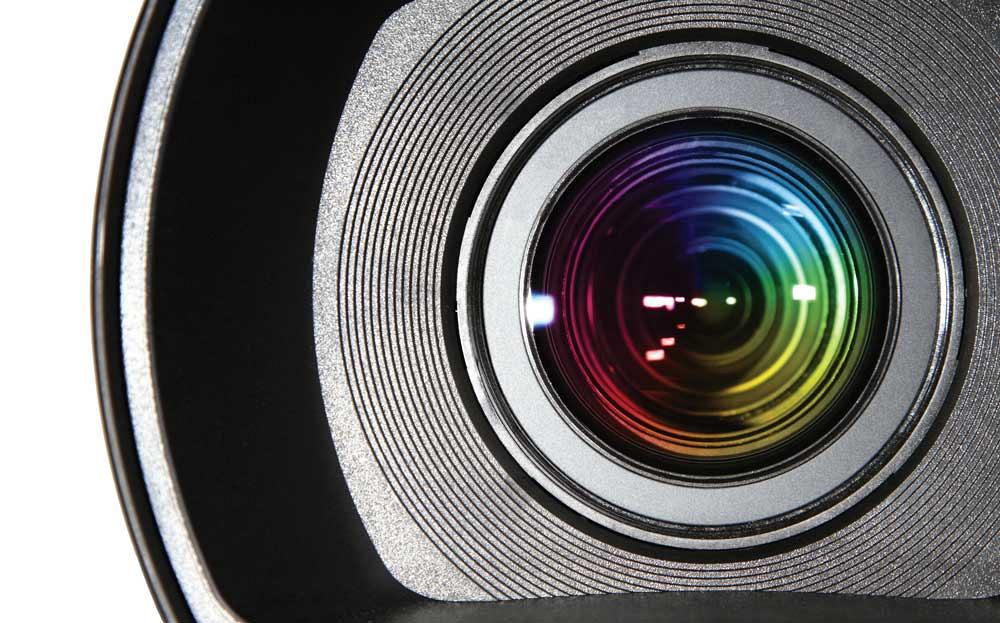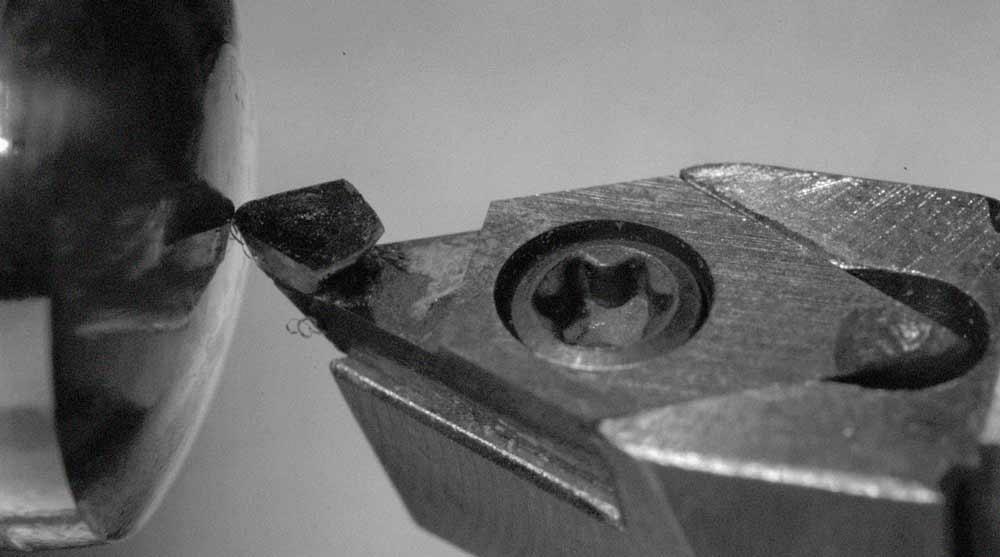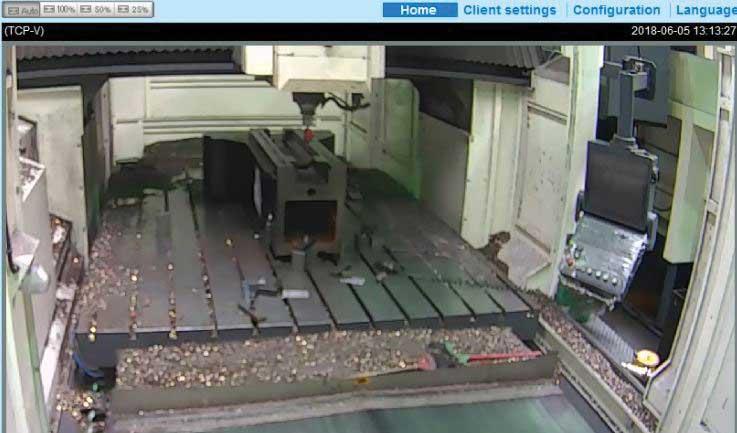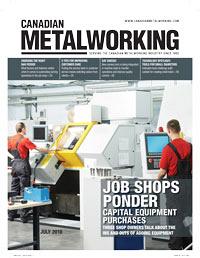Associate Editor
- FMA
- The Fabricator
- FABTECH
- Canadian Metalworking
Trick out your machine tool with the latest camera tech
Cameras are being integrated in machine tools to monitor operations and improve quality control
- By Lindsay Luminoso
- August 6, 2018
- Article
- Measurement
When it comes to the latest technology, cameras often are touted as being an advanced feature on most electronic devices. The latest smartphones are decked out with cameras that can capture high resolution images and even account for blinking and bad lighting by automatically adjusting and filtering when needed. And because of these latest advancements, it is no wonder that machine shops are moving toward integrating cameras into their CNC machine tools.
CNC machine tools can be cumbersome at times with enclosures and interlocks. With chips and coolant flying around, operators often are left complaining about not being able to see what’s going on at the spindle level, especially when it comes to providing new programs and revisions. Windows do not always provide appropriate visuals because they get scratched or flooded with coolant, and most machines are well-lit only when the door is fully open. One of the few options for dealing with this challenge is to integrate a camera in the machine to feed images directly to monitors outside the machine or remotely to give operators better visibility.
Lots of camera options are available on the market, so ensuring that an operator has the right camera for any given application can be a challenge. One of the first questions any applications engineer will ask is, What is the intended outcome? Whether the operator is looking to simply monitor the machining operation visually or expects to measure and extract data from the machining process, there is a camera designed specifically for that. And each camera application is unique depending on the machine type, field of view, and resolution needed for success.
“If we are talking about monitoring in production, one of the main trends is monitoring for failures and possible human errors, which enables the operator to detect the failures and intervene as soon as possible,” explained Nicolas Long, advanced applications and channels specialist for Vision Research, Wayne, N.J. “Monitoring trends also include detailing machine settings to determine how they impact the quality of the finished product.”
However, in-machine monitoring using a camera system is a newer advancement. Camera sensors have become more sophisticated and the actual camera design is much more compact, allowing them to be affixed in places where they previously couldn’t have fit. Operators need to ensure that the field of view they are hoping to monitor can accommodate a camera; otherwise, custom systems can be adapted to fit customer needs.
“We need to understand the size, location, working distance, view, all typical photography elements,” said Long. “We also need to know how fast the process is, especially in terms of what we need to witness or analyze. That will guide us to choose the right solution for the application.”
Before choosing a camera, it is important for a shop to identify the expected outcome. Some people just want to see what is happening in the machine; for that they could just use a standard camera.
Remote Monitoring
“Remote monitoring or management is considered a valuable feature at the moment; that’s why machine monitoring is playing a vital role in the market,” said Ento Lin, sales executive for Hartford machining centres, Taichung, Taiwan. “Currently our CCD feature [machine monitoring system] is an optional function for customers, but more than 80 per cent of our customers are asking for it to be standard.”
According to Lin, simple remote monitoring systems allow the operator to check machining operations without needing to open the door or pause production. The systems can record machining status and enable the operator to view the cause of an error when an alarm signals. It’s as simple as rewinding video to see crashes or errors to make informed decisions on how to proceed. Hurco, Indianapolis, Ind., also offers a remote monitoring system that broadcasts camera data through an Extended Shop Floor feature. With a camera fixed in the machine, the operator can receive event notifications via email or text and access a static image, which is captured every five seconds. The UltiMonitor in-machine video monitoring system allows operators to run remote machine diagnostics.
Data-Driven Monitoring
Instead of simply recording machining operations, shops may be interested in measuring and extracting data such as rotation speed. This requires a much more sophisticated camera that takes images and, more important, extracts numerical information regarding the process. Vision Research’s Phantom ultrahigh-speed camera series takes up to 25,000 frames per second at a 1-megapixel resolution.
“Small cameras have existed for a very long time,” said Long. “A small camera with high frame rates and high resolution can now be achieved. That is extremely new and recent.”
Furthermore, to capture important data and information, especially with highspeed operations like machining, high frame rates are necessary. Machining operations like milling, drilling, and turning require cameras that can run at tens of thousands of frames per second to be effective for machine monitoring and quality control.
“Our industrial customers use cameras typically on the production line or in-process to better understand the process and to adjust if needed,” said Long. “Any industrial process needs finetuning at some point. Our customers use the cameras to control the quality of the process as it is happening—the process results can be extremely fast so high-speed cameras are required in these instances to capture visual elements to allow customers to deal with quality control.”
Setup Monitoring
Operators also can choose to forgo process monitoring for a system that is designed to ensure correct setup. Depending on the needs of the shop and the skills of the operators, setup monitoring may be the only scenario that is required.
“If someone changed the vise or its orientation, or if someone left a wrench in there, this will eventually lead to a collision,” explained Julian Renz, TNC product specialist at Heidenhain, Schaumburg, Ill. “Or are there too many chips on the workpiece to do probing? These are basic questions that can be answered with a camera system like the VS 101. For example, if an operator is machining a lot of parts and they make mistakes, that’s what these types of camera systems are used for—to really make sure that there is no deviation from the ideal setup situation.”
The camera system is a rectangular tube that goes next to the spindle with a vertical orientation, or if there is room, it can go in the spindle envelope. A small lip that opens and closes using a pneumatic mechanism protects the camera from particles or lubricants in the machine envelope.
Renz explained that the camera works in conjunction with the initial setup control by taking several pictures of an ideal setup. Those pictures then set the tolerance for what’s allowed with the realignment of the device. If anything is wrong with the setup, the controller outputs an error message and circles the spot on the image that deviates from the ideal setup. The camera system can be used to run nominal-to-actual value comparisons before the machining operation continues.
Regardless of the type of camera system chosen, some common elements need to be established before a shop implements it.
“There are many things to consider, such as lenses, lighting, camera mounts, and software to analyze the images,” said Long. “Optical setups, specific attachments, housing to protect the camera from flying chips, liquid protection, and so forth, are all needed to provide a complete solution dictated by customer needs.”
With so many options available on the market, shops can pretty much monitor every aspect of the machining process—but is it needed? Some shops will have much higher requirements for machine monitoring than others, but one thing is certain, A camera system is available for whatever a shop needs.
Associate Editor Lindsay Luminoso can be reached at lluminoso@canadianmetalworking.com.
Hartford, www.hartford.com.tw
Heidenhain, www.heidenhain.com
Vision Research, www.phantomhighspeed.com
About the Author

Lindsay Luminoso
1154 Warden Avenue
Toronto, M1R 0A1 Canada
Lindsay Luminoso, associate editor, contributes to both Canadian Metalworking and Canadian Fabricating & Welding. She worked as an associate editor/web editor, at Canadian Metalworking from 2014-2016 and was most recently an associate editor at Design Engineering.
Luminoso has a bachelor of arts from Carleton University, a bachelor of education from Ottawa University, and a graduate certificate in book, magazine, and digital publishing from Centennial College.
Related Companies
subscribe now


Keep up to date with the latest news, events, and technology for all things metal from our pair of monthly magazines written specifically for Canadian manufacturers!
Start Your Free Subscription- Trending Articles
Automating additive manufacturing

CTMA launches another round of Career-Ready program

Collet chuck provides accuracy in small diameter cutting

Sandvik Coromant hosts workforce development event empowering young women in manufacturing

GF Machining Solutions names managing director and head of market region North and Central Americas

- Industry Events
MME Winnipeg
- April 30, 2024
- Winnipeg, ON Canada
CTMA Economic Uncertainty: Helping You Navigate Windsor Seminar
- April 30, 2024
- Windsor, ON Canada
CTMA Economic Uncertainty: Helping You Navigate Kitchener Seminar
- May 2, 2024
- Kitchener, ON Canada
Automate 2024
- May 6 - 9, 2024
- Chicago, IL
ANCA Open House
- May 7 - 8, 2024
- Wixom, MI



















